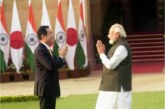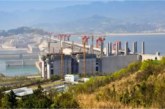Pakistan enjoys ‘all-weather’ friendly relations with China. Unlike the topsy –turvy terrain treaded upon by Pakistan-United States relations, the pattern of Sino-Pak relations has remained smooth and steady. Undoubtedly military component forms the dominant part of overall relationship between Beijing and Islamabad, over time there have accrued economic dividends for Pakistan and public goodwill for China.
Economic ties have blossomed between the two countries in parallel to military and strategic interests. Recent years have seen Beijing responding to Pakistan’s requirements with increasing trade and investment to help Pakistan’s economy, while Islamabad is creating tax-free ‘Exclusive Industrial Zones’ (EIZs) to attract Chinese investment. These initiatives, however, have thus far benefited Chinese products which have ‘deluged’ Pakistani markets to the moaning Pakistani manufacturers. The growing trade disequilibrium has caused economic concerns that also find echo through political discourse in Pakistan, which has long been characterized by a ‘Sinophilic core’1. Alarmed over these developments, China is now pursuing active ‘public diplomacy’ to engage both economic and political players in Pakistan to keep its strategic advantage with Islamabad intact.
Growing Economic Cooperation
China has already removed tariffs on 767 trade goods under the ‘Early Harvest Program’ (EHP) with a view to engulf the trade gap with Pakistan. Benefits have started accruing to Pakistan’s flagship exports such as textiles, surgical and sports manufactures under the EHP. All Pakistani exports to China are likely to be exempted from tariff from January 2006.2 The EHP is a forerunner to he establishment of a Free Trade Area (FTA), which will afford China and Pakistan more preferential trade terms than members of the World Trade Organization (WTO).
Diminished tariffs between China and Pakistan have worked to the advantage of Islamabad, culminating in a 26 percent increase in its exports to Beijing since 204. Cotton-based products such as yarn and fabric dominate these exports, which constitute 70 percent of Pakistan’s total trade with china. Bulk of Pakistan’s trade goods are directed at western China, accessible through Karakoram Highway (KKH), which runs through northwestern Pakistan to western China. Pakistan has built a Dry Port, with Chinese assistance, at the Sust check-point on Sino-Pakistan border that opens into China’s Muslim-majority autonomous region of Xinjiang, in order to boost trade to China though Karakoram Highway.3
Bilateral trade between China and Pakistan has witnessed a dramatic surge over the past two years. It has now jumped to $2.5 billion a year, accounting for 20 percent of China’s trade with South Asia and 10 percent of Pakistan’s total trade of about $25 billion in 2004. China has emerged as Pakistan’s largest trading partner in Asia, surpassing even Japan. Overall trade balance is in China’s favour. China’s exports to Pakistan in 2003-2004 were worth $1.3 billion as compared to Pakistan’s $870 million to China has shown concern about this trade imbalance and expressed its his visit to Islamabad on April 5-7, 2005, the Chinese Premier Wen Jiabao proposed that Pakistan increase rice export to Beijing to close the trade gap. Rice is Pakistan’s second major foreign exchange earner after cotton. Under the EHP, China has already removed tariffs on rice imports from Pakistan.
There has been dramatic augmentation in Chinese investment in Pakistan in 2004 which has increased to $4 billion, thereby recording a 30 percent increase since 2003. Of 500 foreign firms operating in Pakistan, 60 are Chinese, which employ over 3,000 Chinese nationals. Most of the Chinese companies are working energy and infrastructural projects, such as hydroelectric power projects, nuclear power production, exploration of natural gas and oil resources, and extraction of coal, building of rail and road networks, telecommunications, water dams and a deep sea port at Gwadar, Baluchistan. The Gwadar port alone will generate more than a million jobs and a transit economy worth billions of dollars in year.
In there years since its inauguration, the first phase of the Gwadar project is already complete with three functioning berths. Although the total cost of the project is estimated at $1.16 billion USD, China pitched in $198 million and Pakistan $50 million to fiancé the first phase. China also has invested another $200 million into building a coastal highway that will connect the Gwadar port with Karachi. The second phase, which will cost $526 million, will entail the construction of 9 more berths and terminals and will also be financed by China. Pakistan is working on building road links to Afghanistan from its border town of Chaman in Baluchistan to Qandahar in Afghanistan with a view to connect western China with Central Asia by land routes. In the northwest, it is constructing similar road links between Torkham in the Northwest Frontier Province and Jalalabad in Afghanistan. Eventually, the Gwadar port will be accessible for Chinese imports and exports through overland links that will stretch to and from Karakoram Highway in Pakistan’s Northern Areas that border China’s Muslim-majority Autonomous Region of Xinjiang. In Addition, the port will be complemented with a modern air defense unit, a garrison, and a first-rate international airport capable of handling airbus service.4
In the beginning, china was unwilling to finance the Gwadar port project because of Pakistan’s offer to the U.S. of exclusive access to two of its critical airbases in Jacobabad (Sind) and Pasni (Baluchisntna) during the U.S. invasion of Afghanistan. Gen. Musharraf had to do a lot of explaining for leasing these bases to America. China was also upset with Pakistan for allowing the U.S. to establish listening posts in Pakistan’s Northern Areas, which border Xinjiang and Tibet.5 When China finally agreed to offer financial and technical assistance for the project, it asked for “sovereign guarantees” to use the Port facilities to which Pakistan agreed, despite U.S. unease over it……………..more
Please read it in Third Concept/September 2005/Vol.19/No.223/


